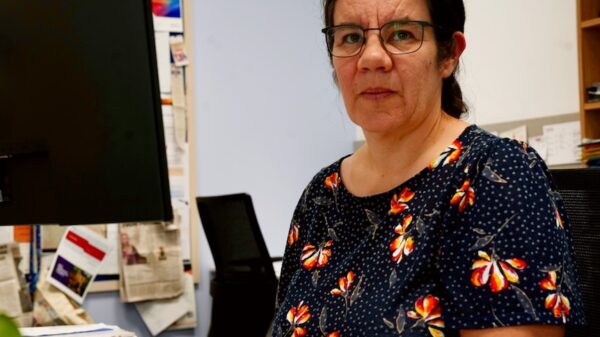A groundbreaking study from researchers at Cornell University has revealed a new method for detecting potential life on exoplanets by analyzing cloud cover. This innovative approach focuses on the reflectance spectra of colorful microorganisms found in Earth’s atmosphere, suggesting that similar life forms may exist in the clouds of distant planets.
The research, led by Ligia Coelho, a postdoctoral fellow in astronomy, was published in the Astrophysical Journal Letters on November 11, 2023. Coelho’s study, titled “Colors of Life in the Clouds: Biopigments of Atmospheric Microorganisms as a New Signature to Detect Life on Planets Like Earth,” provides a color-coded key that could aid astronomers in their search for extraterrestrial life.
Coelho emphasized the significance of microorganisms in the atmosphere, stating, “There is a vibrant community of microorganisms in our atmosphere that produce colorful biopigments, which have fascinated biologists for years.” This finding expands the possibilities for detecting biosignatures on exoplanets, particularly those shrouded in dense clouds.
Innovative Techniques for Life Detection
The microorganisms studied by Coelho are rare in Earth’s atmosphere, requiring specialized techniques for collection. Collaborators from the University of Florida assisted in gathering samples from altitudes between 21 and 29 kilometers using a latex sounding balloon. Coelho grew cultures of these microbes with the help of Stephen Zinder, a professor of microbiology emeritus at Cornell. The reflective spectra were analyzed with the support of Bill Philpot, a professor of civil and environmental engineering.
The research indicates that these colorful microbes could serve as detectable biosignatures on cloudy exoplanets. By modeling various environmental extremes, the team discovered that planets with abundant colorful bacteria would exhibit distinctive spectral signatures, making them easier to identify through telescopes.
Coelho pointed out that the biopigments produced by these organisms protect them from harsh conditions such as radiation and extreme temperatures. This adaptability suggests that similar survival strategies might be employed by extraterrestrial life forms existing in dense cloud environments.
Future Implications for Astronomy
The implications of this research extend to the design of future telescopes. As astronomers reassess their search strategies, technologies like NASA’s upcoming Habitable Worlds Observatory and the Extremely Large Telescope being constructed in Chile will incorporate these findings. The European Southern Observatory’s project is expected to commence scientific observations in the 2030s, allowing researchers to explore previously overlooked possibilities for life detection.
“Biopigments have a universal character on our planet,” Coelho noted. “They give us tools to fight stresses like radiation, dryness, and lack of resources. We produce them, and so do bacteria, archaea, algae, plants, and other animals.” This universality reinforces the potential for biopigments to serve as powerful biosignatures.
The research conducted by Coelho and her team represents a significant advancement in astrobiology, illuminating a path forward for scientists eager to uncover the mysteries of life beyond Earth. By shifting the focus to the clouds of exoplanets, they are opening new avenues in the quest to answer one of humanity’s most profound questions: Are we alone in the universe?


































































